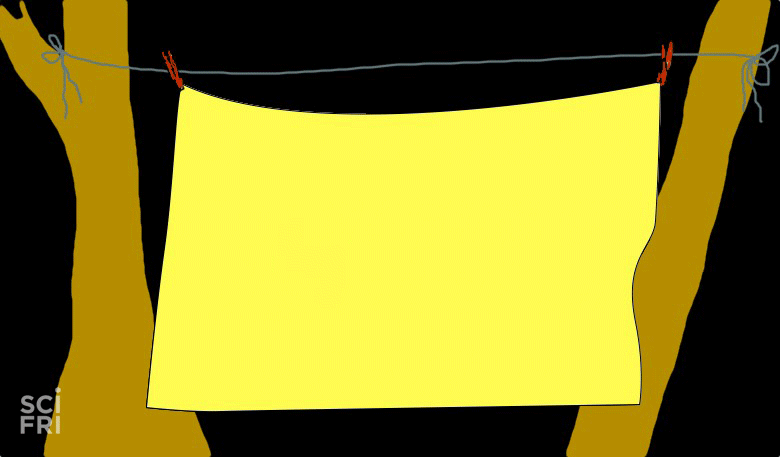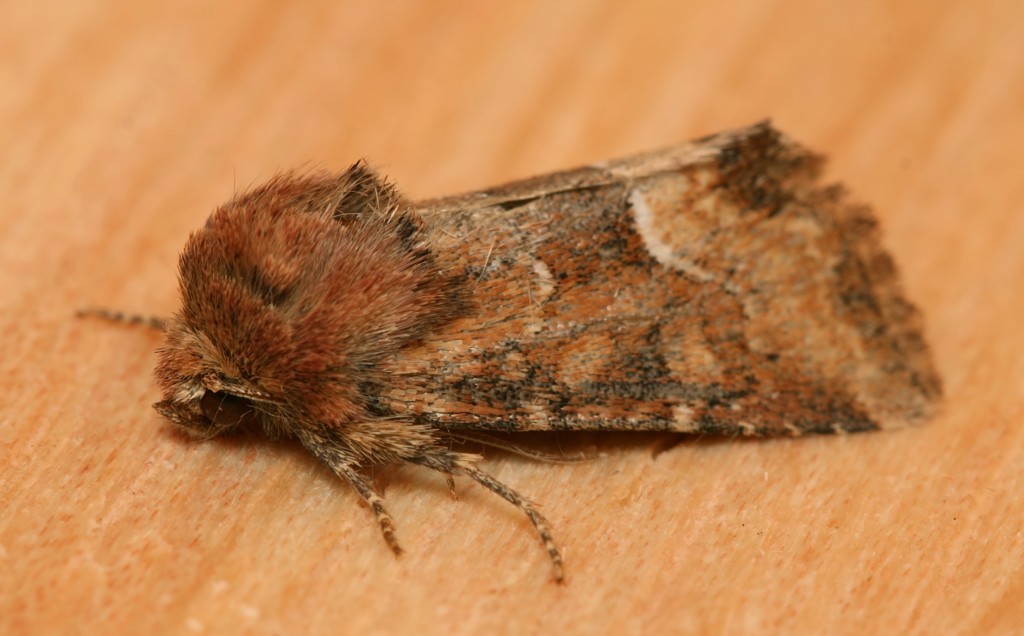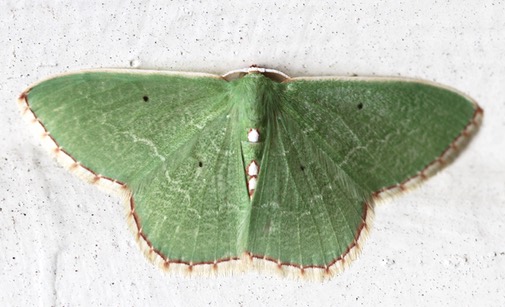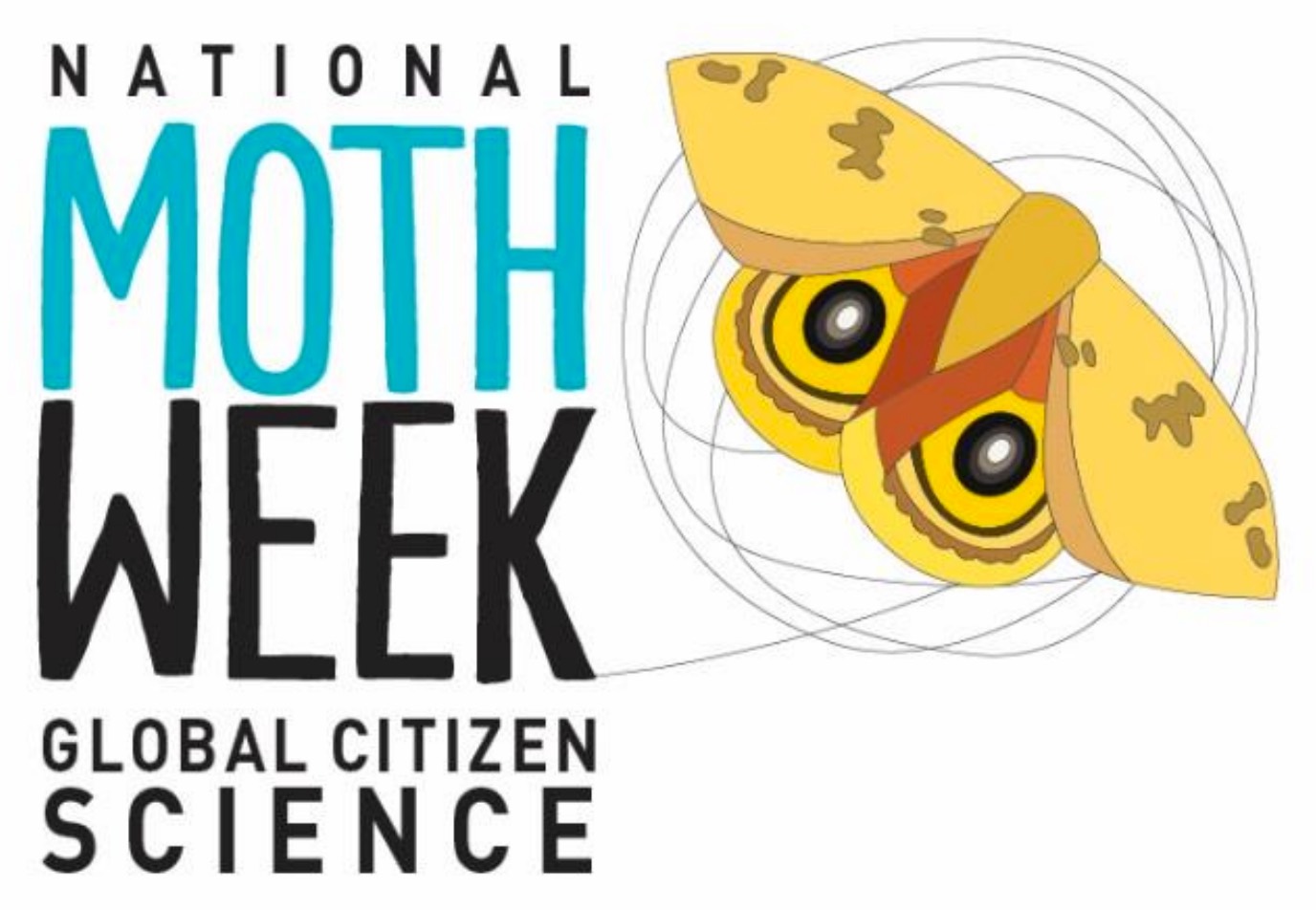Observing Moths is Easy!
Anyone who’s ever sat near a street light or porch light on a summer evening has seen the effect that light has on moths—they love it! You can use this use this behavior to easily observe night-flying moths. All you need is a light source, a surface for moths to rest on, and a dry, still evening outside.
Step 1: Hang a Sheet

Hang a sheet vertically outdoors away from other artificial lights on a windless, dry evening. Moths can be observed nearly year-round in above-freezing temperatures, but summer months are best for viewing the greatest diversity of moths. To make it easier to spot moths when they arrive, choose a light-colored sheet.
Step 2: Find a light source

Any type of light works to attract moths. Bright lights and those that produce shorter wavelengths of light such as UV light or “black light” will attract a wider variety of moths. For best results, make sure that your light is bright enough to illuminate most of the sheet.
Step 3: Light up the sheet, and wait for moths!

Turn on your light so that it fully-illuminates your sheet – moths should begin arriving almost immediately. Bring a hand lens and digital camera to observe and document your moth sightings. Different moths will arrive at different times throughout the evening, so be patient!
A Celebration of the Life in Flight Around Your Porch Light
Identify Moths and Other Insects
With more than 10,000 species of moths in North America alone, it can be a bit overwhelming to begin identifying moths for the first time. You may also find a whole variety of other types of insect arrive at your sheet besides moths, including lacewings, stoneflies, alderflies and dobsonflies, caddisflies, and mayflies. While some of these other types of insects may appear moth-like, you can tell moths apart by the scales that cover their wings, bodies, and even legs—most moths appear furry!

The types of moths that arrive at your sheet will be influenced by the location, time of day, season, light source, nearby habitat, and the presence or absence of other nearby artificial light sources. To tell individual moth species apart, start with moth guidebooks—they are great for identifying large and distinct species, and many also provide images of the caterpillars of moth species as well. For trickier species, use online communities like BugGuide.net, Project Noah, and What’s That Bug, which have photos of moth species already identified and allow users to submit their own photos for identification by a community of experts.
Conduct a Mothing Experiment
With just a sheet and some lights, you can begin conducting your own experiments to better understand moth ecology, behavior, and physiology. Here are some ideas to get you started:
What colors of light are most attractive to moths?
Get three matching flashlights and cover each with a different color of cellophane. Set the flashlights on a table shining on the sheet and count the number of moths that touch each spot of light every 20 minutes. Which color attracts the most moths? You can also try comparing an incandescent flashlight to one that uses LEDs—is there a difference in how many moths are attracted to each?
What types of predators eat moths in your area?
Many moth observers, or “moth-ers,” have found that if they set up a sheet and light multiple nights in a row, moth predators such as bats, owls, and even spiders begin to learn that there’s a nightly buffet! Try setting up a sheet multiple nights in a row for a few hours each night and observe your sheet from a distance. How long does it take predators to figure out that moths are available at your sheet? What kinds of predator are attracted to it?
How does light pollution affect the number of moths that are attracted to your light?
Find a place where you can set up two sheets with identical light sources: one in a dark area, and one that is well-lit by artificial lights such as porch lights, stadium lights, or street lights. After leaving your two sheets illuminated for an hour, count the number of moths on each sheet. How does the amount of artificial light in an area affect the number of moths that are attracted to your light? How do you think light pollution affects moth behavior?
Join a Mothing Event
Each year, moth enthusiasts from around the world celebrate National Moth Week during the last full week of July by going outside and observing and documenting moths. Visit www.nationalmothweek.org to find tips and techniques for attracting moths, mothing events, moth stories from all around the world, and opportunities for submitting your own observations to national citizen science projects. See some of the moths observed during National Moth Week here.
Moths Can Escape Bats By Jamming Sonar
Mothing Illustrations: Ariel Zych
Cover Image: Cyprus Emerald Moth by John Flannery, CC-BY 2.0
Meet the Writer
About Ariel Zych
@arieloquentAriel Zych is Science Friday’s director of audience. She is a former teacher and scientist who spends her free time making food, watching arthropods, and being outside.

